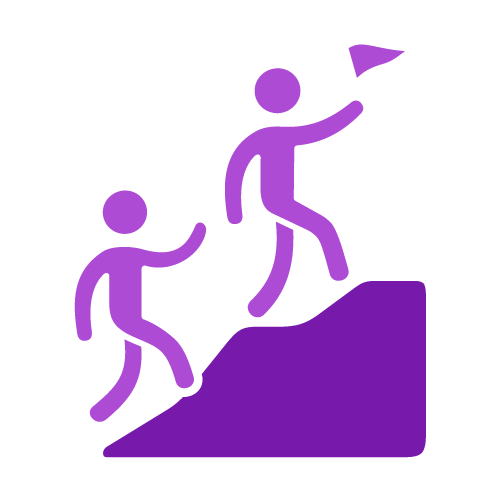
A strong culture of continuous learning is essential for organizations looking to stay competitive in today’s rapidly evolving business environment. Companies that prioritize professional development not only enhance employee skills but also improve retention, innovation, and overall performance. Human resource leaders and organizational decision-makers play a crucial role in shaping an environment where learning is not just encouraged but embedded into daily operations.
Building a culture of learning requires a strategic approach that includes leadership buy-in, structured training programs, and opportunities for employees to develop new skills on an ongoing basis. By implementing effective professional development initiatives, companies can foster a workplace where employees feel supported in their growth and are motivated to contribute at a higher level.
Why Continuous Learning Matters
Investing in employee development benefits both individuals and the organization. A strong learning culture leads to:
- Increased employee engagement and job satisfaction
- Higher productivity and performance levels
- Greater adaptability to industry changes and technological advancements
- Reduced turnover rates and stronger employee retention
- Enhanced company reputation as a leader in employee development
Organizations that encourage lifelong learning empower employees to take ownership of their career growth while ensuring the company remains agile in a competitive landscape.
Secure Leadership Buy-In
A learning culture starts at the top. When executives and managers actively support and participate in professional development initiatives, employees are more likely to embrace learning opportunities. Leadership teams should:
- Communicate the value of continuous learning in company-wide meetings and internal messaging
- Set an example by engaging in their own professional development
- Allocate resources and budget to training and development programs
- Recognize and reward employees who actively participate in learning activities
A commitment from leadership ensures that learning is seen as a company priority rather than an optional activity.
Assess Learning Needs and Goals
Before implementing any training programs, it is important to identify skill gaps and development opportunities within the organization. Conducting skills assessments, employee feedback surveys, and performance reviews can provide valuable insights into areas where training is needed.
By aligning professional development programs with both employee aspirations and business objectives, organizations can maximize the impact of their training initiatives.
Offer a Variety of Learning Methods
Employees have different learning preferences, so providing diverse training formats ensures greater engagement and knowledge retention. Consider incorporating:
- Instructor-led workshops and seminars for hands-on learning and real-time interaction
- Online courses and e-learning platforms for flexible, self-paced learning
- Mentorship and coaching programs to facilitate knowledge sharing and leadership development
- Job rotation and cross-training to help employees gain experience in different roles
- Microlearning modules that deliver quick, focused lessons in short bursts
Offering multiple learning modalities allows employees to choose the methods that best fit their schedules and learning styles.
Encourage Continuous Feedback and Improvement
A strong learning culture thrives on feedback and adaptability. Organizations should:
- Regularly collect employee feedback on training programs and adjust them accordingly
- Foster a safe space for employees to share challenges and seek guidance
- Recognize and celebrate learning achievements to keep employees motivated
Providing a structured feedback loop ensures that learning initiatives remain relevant and beneficial to both employees and the organization.
Integrate Learning into Daily Operations
Professional development should not be a one-time event but rather an ongoing process embedded into the company’s daily operations. This can be achieved by:
- Encouraging knowledge-sharing sessions among employees
- Allowing time for employees to dedicate to learning activities during work hours
- Creating peer learning groups where employees can discuss industry trends and best practices
- Supporting certification programs and industry conferences to keep employees updated with the latest advancements
By making learning an integral part of workplace culture, companies can develop a workforce that is continuously improving and evolving.
Leverage Technology for Scalable Learning Solutions
Technology plays a key role in making learning accessible and efficient. Implementing learning management systems, AI-driven training platforms, and virtual learning environments can enhance the learning experience.
Companies can also utilize data analytics to track employee progress, measure the effectiveness of training programs, and tailor learning experiences to individual needs.
Overcoming Common Challenges
While fostering a culture of continuous learning has numerous benefits, organizations may face certain challenges, including:
- Time constraints as employees who struggle to find time for training amid their daily responsibilities. Offering microlearning sessions and on-the-go learning opportunities can help.
- Lack of engagement if employees do not see the value in ongoing learning. Demonstrating the connection between professional development and career growth opportunities can encourage participation.
- Limited budgets since training programs require financial investment. Using cost-effective online learning platforms and encouraging mentorship within the organization can be effective alternatives.
By addressing these challenges proactively, organizations can create an effective and sustainable learning culture.
The Impact of a Learning Culture on Business Success
A workplace that prioritizes continuous learning not only supports employee growth but also drives overall business success. Organizations that invest in professional development see improvements in:
- Innovation and problem-solving capabilities
- Employee retention and talent acquisition
- Customer satisfaction due to a more knowledgeable workforce
- Adaptability in a constantly evolving market
Encouraging lifelong learning helps employees stay engaged and motivated while ensuring that the company remains ahead of industry trends and changes.
Take the Next Step Toward a Learning-Driven Organization
Building a culture of continuous learning requires commitment, strategy, and the right resources. Organizations that prioritize professional development gain a competitive edge by fostering a workforce that is knowledgeable, adaptable, and motivated to excel.
For expert guidance on implementing effective training and development programs, contact AdvantEdge Training & Consulting, Inc. at 877-333-6787. Customized learning solutions can help organizations create a sustainable culture of growth and success.











